The Apple iPad Pro Review
by Ryan Smith, Joshua Ho & Brandon Chester on January 22, 2016 8:10 AM ESTFinal Words
Overall, the iPad Pro has proven to be a very different experience for me than previous iPads. The design is definitely familiar, with the same industrial design and general feel as previous iPads scaled up to a 12.9” form factor. However, the change in size is something that feels like it should have been done from the start. Of course, there are people that will carry tablets in cargo pockets that want something closer to a 7” display and people that carry tablets in purses that want a ~10” display, but if you’re like me and the only way you can realistically carry a tablet is in a backpack then the 12.9” size makes far more sense.
It’s also noteworthy that despite this increased size I didn’t really notice that it had gotten significantly harder to handle in the hands than an iPad Air 2. This is likely helped by avoiding placing heavy batteries at the edges of the tablet, which reduces the moment of inertia and associated hand or arm strain from holding the tablet for hours on end. This is especially important when considering the Apple Pencil which makes it pretty natural to hold the tablet with one hand and draw with the other for hours on end.
On the SoC side, we’re finally seeing a major player in ARM SoCs directly competing with Intel on their home ground of sorts, and the results are at least somewhat shocking. Despite a handicap on process node, the CPU of the A9X isn’t all that far off from Skylake Core M. And while A9X can't go toe-to-toe, Apple is for the first time capable of reaching Intel's level for some workloads. Otherwise on the GPU side, Apple arguably bests Intel. While iOS vs. Windows doesn't lend itself to as precise comparisons as we'd like due to some fundamental architectural differences, for a developer writing a GPU-accelerated application tailored for the platform the A9X’s 12 Cluster Series7XT GPU is capable of doing more than the Core M’s Intel HD 515.
Ultimately Apple's Twister CPU core is now the “new normal” for Apple devices, so I’m not nearly as blown away as I was with the iPhone 6s, but I really do have to emphasize that this SoC is incredibly fast. Currently, it has no real competition in the ARM SoC space, and I suspect it won’t for quite some time even in light of new SoCs on the horizon like the Exynos 8890 and Snapdragon 820, as the SoC is tailored for tablet use rather than a smartphone SoC with more thermal headroom. When combined with the Apple SSD present in this device, it’s hard to complain about performance for the most part.
This strong showing in SoC performance, combined with a noticeable amount of work on the display results in a relatively impressive level of battery life. While it isn’t really better than the iPad Air 2 here, the sheer efficiency of the hardware in the iPad Pro means that the battery is smaller on a relative basis despite the large difference in display size. It’s easy to fixate on battery size as the sole determinant of battery life, but that ignores half the equation. The one notable area where efficiency isn’t as good as one might hope is LTE battery life, but I suspect that the impact here isn’t going to be as noticeable as it is with a smartphone as even with our LTE variant I spent most of my time using WiFi to get work done.
From an internal hardware perspective the one real issue here is the rate at which the iPad Pro charges, which is starting to approach unacceptable levels. Future iterations of iPad Pro really need to ship with a much more powerful charger. Even 4 hours to charge is pretty excessive compared to the 3 hours or so that it takes most laptops to charge or the 2 hours that it takes for a phone to charge.
On the display side, Apple continues to ship some of the best displays I’ve seen in the industry. The iPad Pro is no exception, with a relatively bright panel combined with an incredibly good anti-reflective coating to basically eliminate the disadvantages that come with glossy displays. The move to a new display technology also makes for some truly impressive contrast figures for an LCD, although it’s not a competitor to OLED if you only focus on contrast. As an aside, I suspect microLED or OLED is going to have to take the place of traditional LCDs at some point, as OLED is probably going to be unambiguously superior to even the best LCD by the end of this year if the trajectory of improvement continues.
But LCD or not, the iPad Pro’s display also has incredibly good color calibration. Apple does tend to prefer slightly blue white balance, but I suspect this is mostly a trade-off between color accuracy and power efficiency. For color-critical work in areas like medical and creative industries I suspect that the iPad Pro is sufficient due to its relatively low color shift with changes in viewing angles. It’s also interesting to see that there is clearly evidence of Apple’s custom DisplayPort timing controller (TCON) within the system files, but we basically have to take Apple at their word that this TCON is dynamically switching between 60 and 30 Hz refresh rates as I really couldn’t tell that this was happening in practice, or within system files.
While the basics are critical, the iPad Pro earns its “Pro” moniker on the basis of its accessories, the Apple Pencil and Smart Keyboard. The Apple Pencil is unquestionably the best stylus I’ve ever used in any mobile device. I would argue that the Apple Pencil combined with the iPad Pro is probably the single greatest threat to Wacom’s dominance in the professional market today. We can spend all day arguing about how Apple Pencil has no buttons and has an odd charging method, but for $900 USD you can either buy a Wacom Cintiq 13HD Touch or an iPad Pro with Apple Pencil. If the right apps are available on the iPad Pro, it’s pretty much indisputable that the iPad Pro is going to be a better, more elegant solution for getting stylus-related work done.
Outside of creative work, the Apple Pencil is shockingly good as a pencil/pen and paper replacement. Even with the default Notes app I felt like the iPad Pro is far and away superior to carrying around a folder, notebook paper, pencils, pens, erasers, straight edges, and textbooks. I’ve always been looking for a tablet that could be seriously used for academic work, and the iPad Pro is pretty much what I’ve always been looking for. The Surface Pro 4 comes close to be sure, but I would argue that it really isn’t a proper tablet by virtue of how dependent it is on trackpad input. The stylus also just not as well-implemented as the iPad Pro, which is evident as soon as you try to do perfectly straight diagonal lines. In addition to education contexts, I wouldn’t be surprised to see Apple Pencil take off in areas like point of sale registers. While 3D Touch is great, the Apple Pencil managed to surprise me even more. However, the applications of Apple Pencil are somewhat limited to these specific cases compared to the more universal applications of 3D Touch.
The Smart Keyboard by comparison is a bit of a letdown. While I like using the keyboard a lot when I can set it up on a table or something and do nothing but type out paragraph after paragraph, the trouble is that as soon as some other UI interaction is needed the user experience kind of falls apart. Both setting up and taking down the keyboard takes some time, and doing the motions/origami necessary to do this is not something that can be done carelessly as the Smart Keyboard can and will fall apart/behave unpredictably if you don’t put it together properly. In order to really hit it out of the park, the Smart Keyboard needs to be more stable in the lap, have at least one more useful angle, and be much faster to set up/take down. In essence, the hope is to be able to rival a touch keyboard for bring-up/take-down, but introduce the ability to touch type at speeds that touch keyboards realistically cannot hope to rival. I don’t really think it’s reasonable to argue that the iPad Pro with the keyboard set up is an ideal experience for UI navigation, as using the touch screen is about as ergonomic as a touch screen laptop and using the keyboard for navigation only feels an awful lot like using a command line interface.
In fairness to Apple though, the Smart Keyboard is arguably the right direction for tablets to take. We can talk about how the Surface Pro implementation is better, but I’m still not a big fan of using a trackpad on a “tablet,” and pecking at a display with my finger is arguably even worse. The kickstand also has a lot of issues with lap stability as well, although it does resolve some of the concerns with getting the right angle for proper visibility of the display. The problem of text input on a “pro” tablet is one that needs new solutions, and other than the iPad Pro and Pixel C I honestly haven’t seen anything that comes close to getting in the right direction.
On the software side of things, the iPad Pro continues to be one of the few (if not only) tablets that has an OS and UI that is properly designed for a mobile tablet. Microsoft is doing an admirable effort here with Windows 10, but the sheer difficulties that I have with something as simple as high DPI scaling in Windows is just unacceptable for a tablet. It’s also difficult to deal with the sheer number of legacy applications out there, which really complicates control schemes. I found the vast majority of the time I ended up having to use a stylus or trackpad for simple UI interactions because the touch targets were just too small otherwise. Android has some pretty severe issues with making a tablet UI that is more than just a scaled-up phone UI, which leaves the iPad Pro as more or less the only game in town. There are some issues that stem from the lack of ability for apps to really interface with each other and the difficulty of abstracting away the file system, but for the most part I found iOS to be quite good for getting work done.
However, iOS is not a perfect tablet OS. One real problem here is that the multi-window UI isn’t quite as good as it needs to be. While the current list of apps that fully support this functionality isn’t unmanageable, as time goes on I suspect it will get to be rather annoying to scroll through a long list of apps. There’s also the issue of performance. While there was a time when iOS was just incredibly smooth all the time, I’m starting to notice a trend of apps and general UI tasks that show rather concerning levels of frame drops. I’m not really sure exactly when this happened, but something as simple as scrolling through the Notes app shows frame drops on par with scrolling through Google’s Play Store app. This is definitely an area where Apple should focus on improving, as performance problems shouldn't be a concern with a tablet that's as powerful as the iPad Pro.
While the camera is arguably quite low on the list of priorities for a tablet, Apple manages to deliver one of the best cameras in a tablet today. I honestly wouldn’t advise using it as an actual camera, but as a last resort it works quite well. The speakers are also hugely impressive for multimedia use, and probably beat everything else I’ve ever tried on a mobile device, although this is based upon subjective observation. I found that watching YouTube and movies on this tablet is great when paired with the speakers. People that only use headphones for audio might find this feature pointless, but if you’re sitting in bed or in your room watching a movie it’s definitely convenient to not have to put in headphones while getting acceptable audio quality.
Overall, the iPad Pro is an incredibly good tablet. I’ve always liked the idea of a tablet, but for the most part I’ve been deeply dissatisfied with the implementations of tablets. With the iPad Air 2 review I really emphasized how a proper keyboard and a good stylus would really make the user experience much more compelling, and with the iPad Pro we’re finally starting to see movement towards the tablet that I’ve always wanted. The iPad Pro is arguably the first tablet that I personally want to even consider buying. It isn’t perfect by any means, and there is still a lot of work to be done - seemingly fitting for a first-generation Apple device - but for the first time in a long time it feels like the broader tablet market is advancing once again. If you want a proper tablet that can replace pencil and paper with a keyboard for extended typing sessions, I have no problem recommending the iPad Pro. If you're hoping for a laptop that can also double as a tablet, I suspect that the Surface Pro 4 will remain the right choice for you.


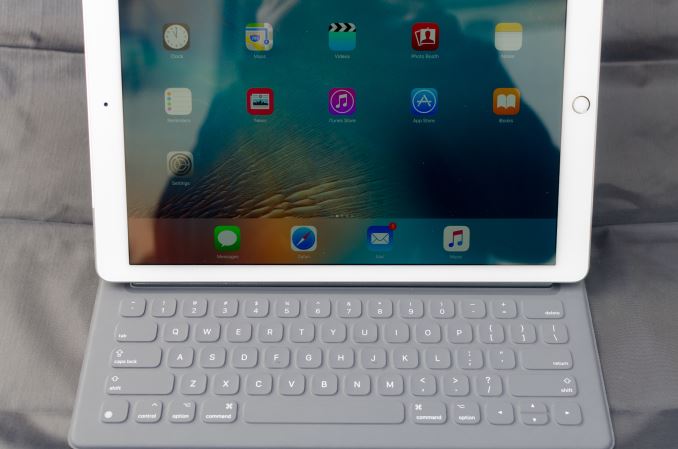
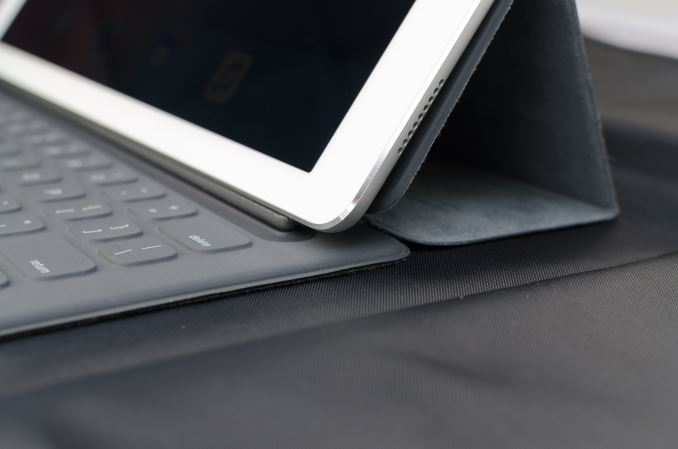

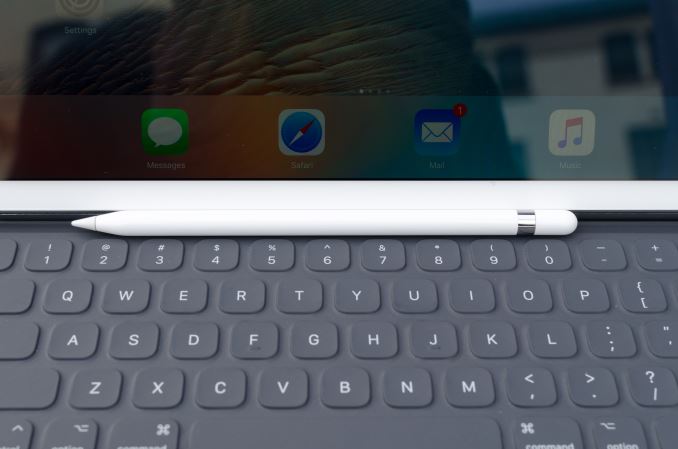
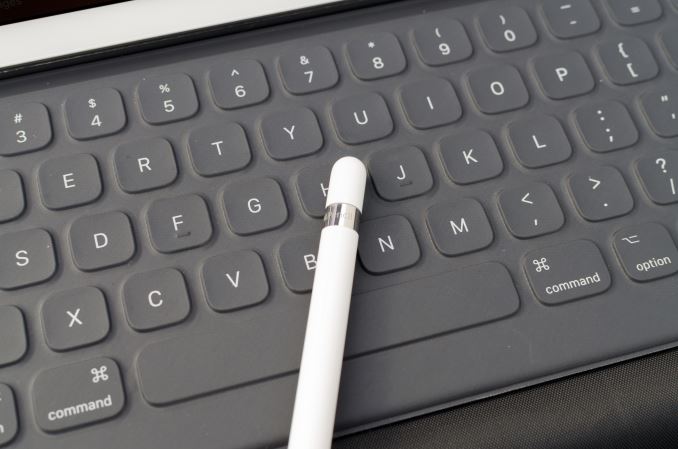

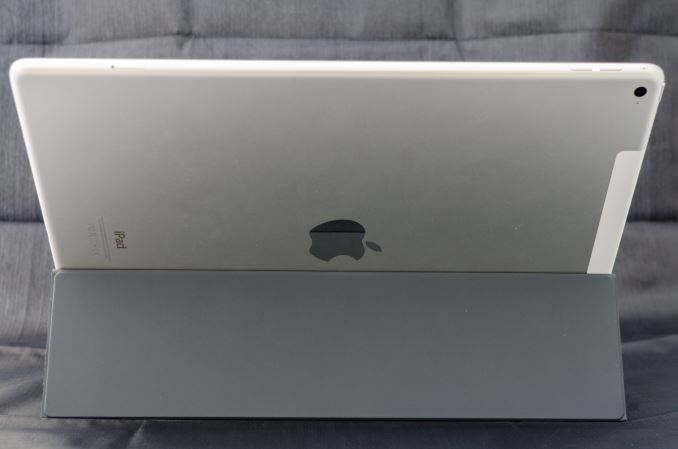
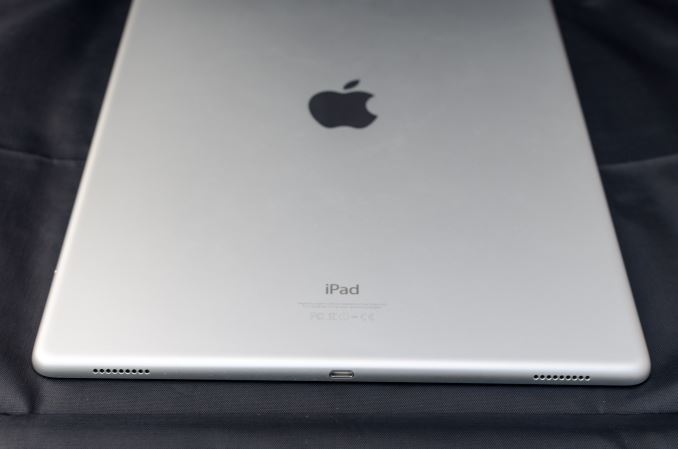
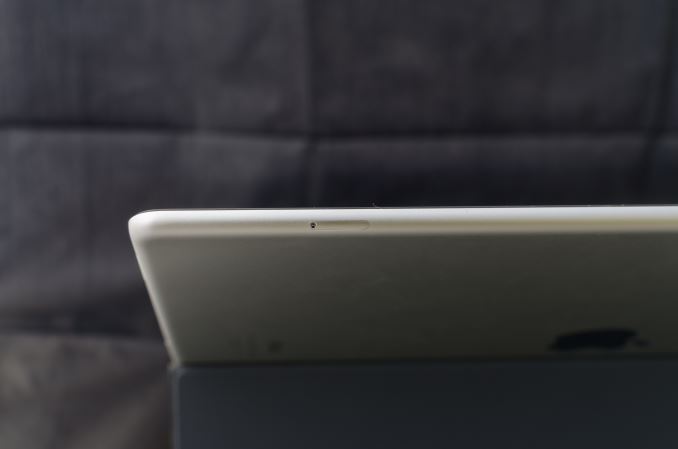
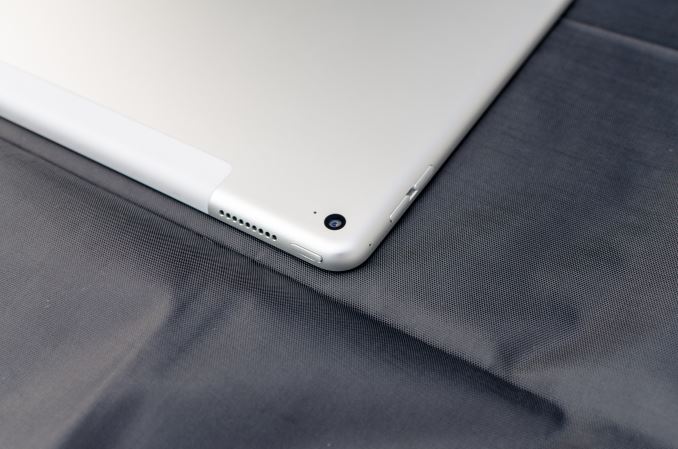
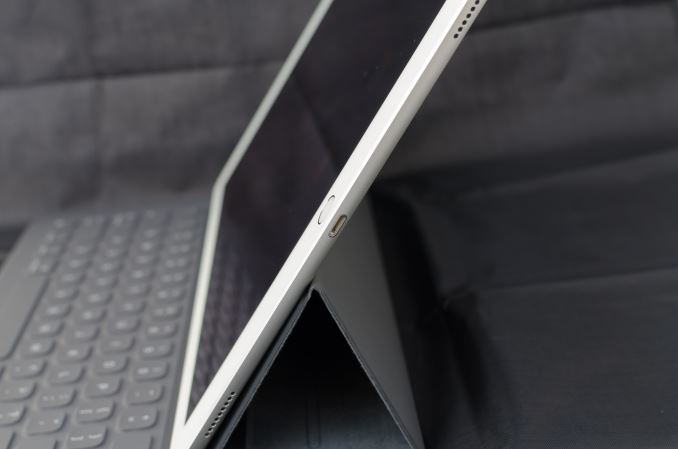








408 Comments
View All Comments
nsteussy - Friday, January 22, 2016 - link
Well said.Wayne Hall - Friday, January 22, 2016 - link
WHAT IS MEANT BY PROFESSIONAL TASKS. I AM THINKING OF THE I-PAD PRO.gw74 - Friday, January 22, 2016 - link
Why do Apple only want content consumers' money in mobile, and not creators' too? Apple are in business to make a profit. If there was money to be made building workstation apps for mobile, it would happen. Furthermore "exploit their owners commercially" is just a pejorative way of saying "sell them stuff in return for money", i.e. "business".Sc0rp - Friday, January 22, 2016 - link
1) Apple made the pencil. I'm sure that they want creator's money too.2) The "Pro" market is incredibly small and fickle.
AnakinG - Friday, January 22, 2016 - link
I think Apple wants people to "think" they are creators and professionals. It's a feel good thing while making money. :)Constructor - Saturday, January 23, 2016 - link
The iPad Pro is a fantastic device for all kind of uses – I personally also use it as a mobile TV, streaming radio (due to its really excellent speakers), game console, internet and magazine reader (since it is pretty much exactly magazine-sized!), drawing board, note pad, multi-purpose communicator (mail, messaging, FaceTime etc.), web reader, ebook reader and so on...As to the numbers: According to an external survey it seems about 12% of all iPads sold in the past quarter were iPad Pros. We're talking about millions of devices there at the scale at which Apple is operating – most other tablet manufacturers and even PC manufacturers would kill for numbers like thes at prices like these!
It's almost funny how some people completely freak out about the iPad Pro because it crashes through their imaginary boundaries between their imaginary "allowed" kinds of devices.
The iPad Pro is a really excellent computer for the desktop (if for whatever reason an even bigger display is not available), which also works really well on my lap (actually much better and almost always more conveniently than a "laptop" computer!) and even in handheld use like a magazine or notepad. It's very light for its size, has a really excellent screen, excellent speakers and is fast and responsive.
Yeah, you can find things which you at this moment can't do on it yet. But there are many, many practically relevant uses at which it excels to a far greater extent than any desktop or notebook computer ever could.
jasonelmore - Sunday, January 24, 2016 - link
so you basically use it as a consumption and a communication device.. our point is, a professional cannot use this as their only computing device. they need PC's or MAC's to supplement it, which all use Intel or AMD.Until this fact changes, intel is far from being in trouble. iPad sales are in a huge slump as well, not just pc sales. Actually, Notebook PC sales are great, its the desktop that slows down every 3-4 years. iPhone is about to become a 0 growth product as well. Apple see's the writing on the wall, and that's why they are exploring cars, and other unknown products. The Chinese market never turned out like they had hoped, with stiff competition at low costs with similar quality.
Constructor - Sunday, January 24, 2016 - link
so you basically use it as a consumption and a communication device..Among many other things! So let me guess, when you happen to play some streaming music on your workplace computer or if you're watching the news on it, does it automatically turn into a "toy" and yourself into one of those mythical "only consumers" as well?
This silly ideology is really ludicrous.
our point is, a professional cannot use this as their only computing device. they need PC's or MAC's to supplement it, which all use Intel or AMD.
Nope.
Some portion of workplaces actually requires a desktop OS. This portion is not 100% but substantially lower than that.
A very large portion of workplaces (likely the majority) could very well use iPads as well, but external circumstances make regular PCs or Macs just more convenient and practical.
And some other portion can and does use mobile devices already now as their primary tools.
The tedious and absurd conclusion from people's own limited knowledge and imagination to absolute judgments of the entire market is anything but new, but it's really old news by now.
Until this fact changes, intel is far from being in trouble. iPad sales are in a huge slump as well, not just pc sales. Actually, Notebook PC sales are great, its the desktop that slows down every 3-4 years. iPhone is about to become a 0 growth product as well. Apple see's the writing on the wall, and that's why they are exploring cars, and other unknown products. The Chinese market never turned out like they had hoped, with stiff competition at low costs with similar quality.
You should seriously get better sources for your information as your imaginations are rather far off from actual reality.
Intel is already in a tightening squeeze between the eroding PC market (especially regarding its crumbling profitability) and the ever-rising development costs they face with their creaking x86 antiquity. That their CPU performance is stagnating at the same time is also increasingly problematic, too, since it puts another damper on the PC market.
When you're talking about Apple you clearly live in a different universe from the rest of us: Apple is actually booming in China while the cheap manufacturers have run into unexpected difficulties against them, and your other imaginations of Apple's doom are neither original nor do they have anything to do with the actual reality on the ground.
Even the iPad is a massive cash cow on a scale the competition can only dream about – it's just dwarfed by the absolute gigantic profits from the iPhone.
But yeah, surely that spells inescapable doom for the company.
Sure!
Coldmode - Friday, January 22, 2016 - link
This is the stupidest paragraph about computing I've ever read. It's equivalent to lamenting Bell's role in telephony because we managed to win World War 1 with telegraphs but now teenagers spend all their time hanging off the kitchen set chatting to one another about their crushes.ABR - Monday, January 25, 2016 - link
@ddriver I disagree with most of what you say in these contents, but, "today we have gigahertz and gigabytes in our pockets, and the best we can do with it is duck face photos," hits the nail on the head! The problem though is not that software developers don't try to do more, but that they can't make any money doing so. The masses just want to buy the latest duck photo app, and there's not enough of the pie left over to support much else. In the early days of the iPad this wasn't so, but nowadays take a look at the top charts in iOS to see what I mean. Games makes more than all others put together, and then even in categories like Utilities, you see mainly Minecraft aids, emoji texters, and a few web browser add-ons. Apple doesn't promote this in their advertising, but they do so in more subtle but effective ways like which apps they choose to feature and promote in the app store. In fact, the store is littered with all kinds of creativity- and productivity-unleashing apps if you search hard, but they all tend to die on the vine because they get swamped out by the latest glossy-image joke-text-photo-video apps and the developer loses interest.